#thirteen women
Photo

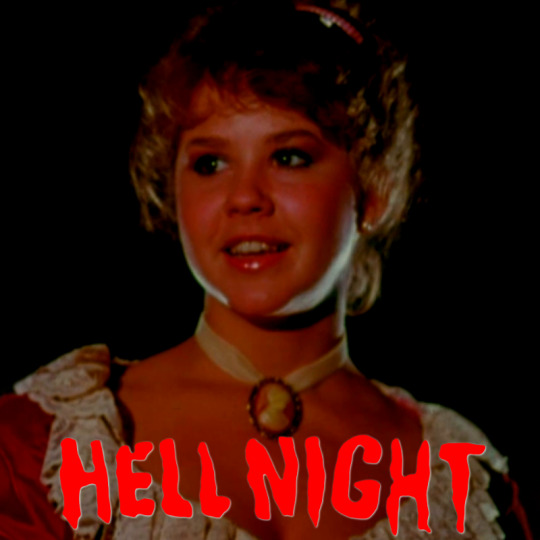
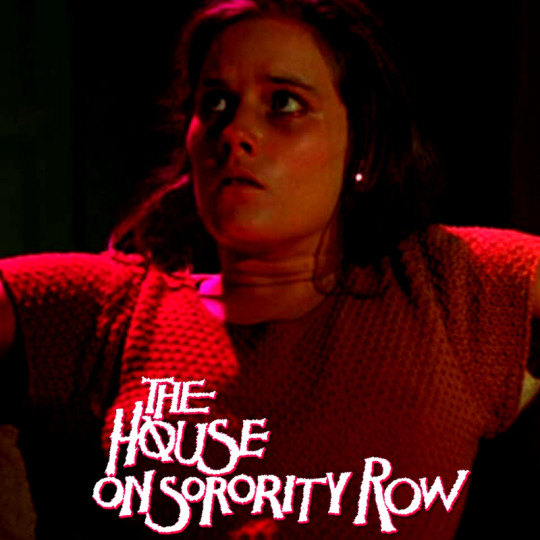

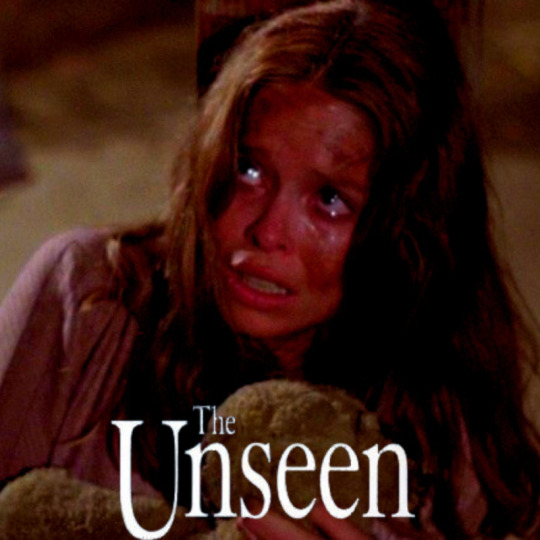





final girls
#wanted to give some highlight to some underrated final girls#horror#horror movies#graduation day#hell night#the house on sorority row#stagefright#the unseen#thirteen women#tourist trap#my bloody valentine#terror train#the prowler#slasher films#moviesedit#horroredit#filmedit#cinema
486 notes
·
View notes
Text

Myrna Loy in Thirteen Women (1932).
100 notes
·
View notes
Text
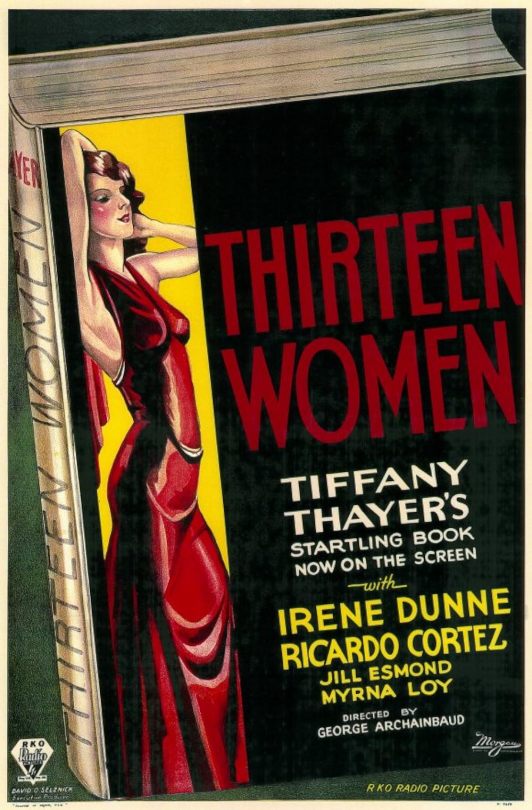
#Thirteen Women#Irene Dunne#Ricardo Cortez#Jill Esmond#Myrna Loy#Florence Eldridge#George Archainbaud#1932
22 notes
·
View notes
Text
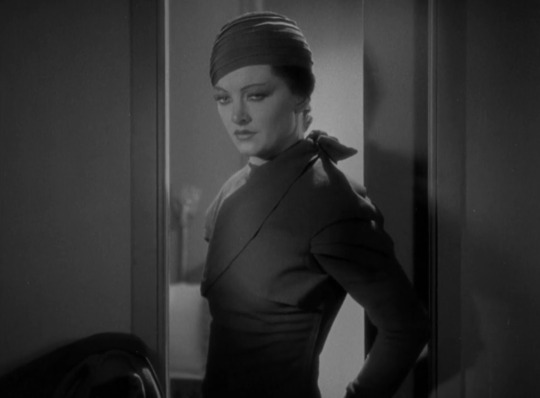
Seen in 2023:
Thirteen Women (George Archainbaud), 1932
#films#movies#stills#Thirteen Women#George Archainbaud#Hollywood#1930s#Myrna Loy#pre-Code#seen in 2023
19 notes
·
View notes
Text
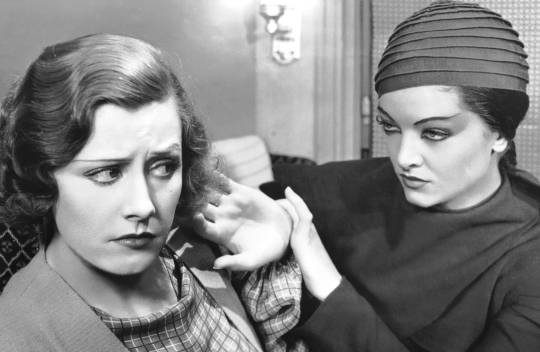
Irene Dunne and Myrna Loy in Thirteen Women (George Archainbaud, 1932)
Cast: Irene Dunne, Myrna Loy, Ricardo Cortez, Jill Esmond, Mary Duncan, Kay Johnson, Florence Eldridge, C. Henry Gordon, Peg Entwistle, Harriet Hagman, Edward Pawley, Blanche Friderici, Wally Albright. Screenplay: Bartlett Cormack, Samuel Ornitz, based on a novel by Tiffany Thayer. Cinematography: Leo Tover. Art direction: Carroll Clark. Film editing: Charles L. Kimball. Music: Max Steiner.
Myrna Loy was born Myrna Williams in Helena, Montana, but you wouldn't know it from the way Hollywood often cast her at the start of her career in the '20s and '30s. Her role in Thirteen Women is probably the purest example of her work as the stereotypical sinister Eurasian. She plays Ursula Georgi, whom the cop played by Ricardo Cortez scorns as "Half-breed type. Half Hindu, half Javanese, I don't know." (Actually, Cortez himself knew something about crossing ethnic lines: He was born Jacob Krantz in New York, but Hollywood changed his name to capitalize on the vogue for Latin lovers like Rudolph Valentino and Ramon Novarro, and later claimed first that he was French and later that he was born in Vienna.) Ursula seeks revenge on the women who belonged to a sorority at a girls' college and blackballed her when she sought admission. She seeks out a phony seer known as Swami Yogadachi (C. Henry Gordon), whose horoscope readings the girls sought out, and hypnotizes him into sending them poison-pen readings that predict dire events. Two of the girls, the sisters June (Mary Duncan) and May Raskob (Harriet Hagman), have become trapeze artists, and June is so unnerved by the fake reading that she lets May fall to her death during a stunt and goes mad as a consequence. As others fall prey to Ursula's schemes, some of the survivors gather at the home of Laura Stanhope (Irene Dunne), who thinks that their hysteria over the deaths is absurd. Laura is the single mother of a son, Bobby (Wally Albright), who is one of those cloyingly cute movie children -- he calls her "Mumsy." But even Laura's calm vanishes when Ursula makes Bobby her next target. In addition to being stupidly racist, the movie is sheer hokum, a cockamamie blend of revenge thriller and police procedural, and it was not much of a success at the box office, even after RKO cut 14 minutes from it after test screenings -- one of the reasons why we learn the fates of only 10 of the 13 women. One of the performances cut to only four minutes was that of Peg Entwistle, who played Hazel, the one who kills her husband and goes to prison. Entwistle was reportedly so despondent about her movie career that she climbed to the top of one of the letters on the Hollywood sign (reports vary on whether it was the H or the D) and jumped to her death. As for Loy, this was her last outing as a Eurasian vamp: The Thin Man (W.S. Van Dyke, 1934) changed her screen image to that of the witty and soignée wife, most often of William Powell.
22 notes
·
View notes
Photo





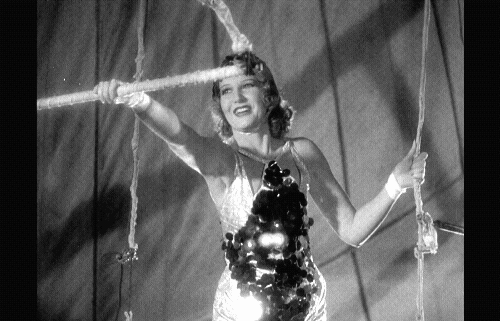



Thirteen Women (1932)
RKO Radio Pictures
Dir. George Archainbaud
Peg Entwistle as Hazel Clay Cousins
Mary Duncan as June Raskob
Harriet Hagman as May Raskob
Hazel watches her long-time friends, the Raskob Sisters, perform their famous trapeeze act at Joe E. Marvel's Circus. June Raskob is feeling uneasy, having received a letter from a New York Swami warning that her latest horroscope shows she will soon cause the death of a loved one. Hazel knows something is amiss, but is unable to do more than give June meaningful looks from the stalls far below. Tradgedy strikes during the act when June fails to catch her sister, May, who plummets to her death.
Peg Entwistle, a successful stage actress, played Hazel in Thirteen Woman, which was to be her only feature film. On 16th September, 1932, she committed suicide by jumping from atop the "H" on the Hollywood sign at Mount Lee.
Thirteen Women was released the following month, on 15th October, 1932.
An excellent and detailed biography for Peg Entwistle can be found on the IMDB [X]
103 notes
·
View notes
Text
BLOGTOBER 10/13-14/2023: THIRTEEN WOMEN, SVENGALI

I really loved this. I wonder what the book is like, I might have to read it! Author Tiffany Thayer sounds like a pretty interesting guy as per this collection of provocative reviews on Wikipedia:

I don't know about you, but that makes me want to read everything he wrote. THIRTEEN WOMEN concerns a circle of grownup sorority sisters who are beset by an anomalous series of murders and suicides. It so happens that all of the women recently received damning horoscopes in the mail from a self-styled New York Swami--but the Swami himself is just a pawn in a greater conspiracy masterminded by Ursula Georgi (Myrna Loy). The master hypnotist has a bone to pick with these smug society ladies, which I am about to spoil so plug your ears if you'd rather watch the movie first (and you should! It's only an hour long): As a half-Javanese girl "saved" by a missionary who sent her to a western finishing school, Ursula believed the key to her future was to pass for white. Therefore, she's vowed revenge on the racist sorority that rejected her in college, and honestly the revenge she has plotted should have earned her an honorary PhD. It's hard to imagine that either a 1930 novel or a 1932 movie really mean to say "fuck racism" so frankly, but the sharp premise and Myrna Loy's incredible charisma make it hard not to side with the ostensible villain in this picture.

Some people have remarked that THIRTEEN WOMEN is an early iteration of the slasher movie, with its female ensemble (of sorority babes no less) being picked off one by one. To me it was more reminiscent of the cursed media motif familiar to J-horror. Maybe I'm just saying this because I rewatched RINGU this Blogtober and I was encouraged by the documentarians behind THE J-HORROR VIRUS to consider its influence on SMILE, which I also rewatched, and which I'm realizing I love. The victims in THIRTEEN WOMEN have signed a round robin chain letter, for which they each receive a star chart describing their imminent doom; the power of suggestion takes the place of power tools here, with Ursula's sheer force of will acting as a free-floating contagion that rots the guilty and weak from the inside out. I was reminded of movies like RINGU and JU-ON as much as of Jorg Buttgereit's DER TODESKING, an experimental horror film about a chain letter that causes its recipients to self-destruct. It's fun to think that THIRTEEN WOMEN is a progenitor of movies like BLACK CHRISTMAS, but I see reflections of it elsewhere, too.

I wound up pairing this with SVENGALI just because they're both hypnosis movies, but that movie turned out to have its own racial tensions. In George du Maurier's foundational 1894 novel Trilby, the evil hypnotist is explicitly Jewish; in Archie Mayo's 1931 adaptation, Svengali is referred to abstractly as "Polish or something", which seems to be a euphemism for a Semitic Eastern European identity. This might not invite such analysis if it weren't for the styling of John Barrymore as a swarthy, rodent-like embodiment of greed. When I say that, it sounds pretty negative, but I'd still insist that SVENGALI is a great movie well worth seeing for its perverse humor, surprising grimness, expressionistic design (courtesy Anton Grot), and unusual horror elements--in addition to Barrymore's unforgettable performance.

I guess there has been some debate over whether SVENGALI is properly a horror movie, and I refer you to author Tony Burgess who once said that if you have to argue about whether or not something is a horror movie, then it's probably a horror movie. The only causes to argue are if you insist on an extremely narrow definition of horror to guide your personal consumer habits, or if you're squeamish about admitting that you've ever enjoyed or respected anything that falls under the horror umbrella (and I tend to think the latter case is more prevalent). Admittedly, SVENGALI blends comedy, romance, and musical elements such that the viewer is never quite sure how dark things will get until the very end, but I think that anyone should be able to see the horror in the incredible sequence of the eponymous villain sending his disembodied consciousness through the CALIGARI-like city to possess the unwitting Trilby (played by Marian Marsh who must have been the most adorable person alive at the time). A few different visual effects are used to evoke Svengali's power, some of which are still modern-looking and scary, and the film's breezy humor and charm do not promise any particular safety.

On some level, the aura of antisemitism and xenophobia itself lets us know we're in horrific territory. This is the genre of fears, rational and irrational, where we face whatever society perceives as threatening. Today we're in the midst of a lot of arguments about whether or not "separating the art from the artist" is ever appropriate, with full cancellation of the art AND artist positioned as the only alternative, but both of these options suggest that we must never have to face immorality, ambiguity, or ambivalence in art at all; we're forced to either avoid it or ignore it. This denies us the opportunity to understand what these darker emotions consist of, and understanding is the only way to defang them. Personally, I don't think it's any more helpful to condemn e.g. Dracula or the Wicked Witch of the West for their bigoted elements, than it is to simply pretend those things aren't there at all. SVENGALI provides us with a similar opportunity to confront antisocial phobias, with its troublingly caricaturesque villain and the unavoidable fascination one feels when his hypnotic gaze projects itself at us from the screen. Recommended viewing.

#blogtober#2023#horror#thriller#slasher#adaptation#racism#thirteen women#george archainbaud#tiffany thayer#myrna loy#svengali#trilby#george du maurier#archie mayo#john barrymore#marian marsh#pre-code#anton grot
18 notes
·
View notes
Photo

Myrna and Irene: These two starred in Thirteen Women, where a mystical and evil Myrna Loy seeks retribution on, you got it, thirteen women, who treated her badly during their school years. The lucky thirteen included star Irene Dunne.
#Myrna Loy#irene dunne#Thirteen Women#old hollywood#classic film#Golden Age of Hollywood#The Myrna Loy Blog
28 notes
·
View notes
Text

"But do you know what it means to be a half-breed, a half-caste, in a world ruled by whites? If you're a male, you're a coolie, and if you're a female, you're, well . . . The white half of me cried for the courtesy and protection that women like you get. The only way I could free myself was by becoming white. And it was almost in my hands, when you, you and your Kappa Society, stopped me."
#thirteen women#george archainbaud#florence eldridge#mary duncan#irene dunne#myrna loy#kay johnson#marjorie gateson#peg entwistle#harriet hagman#rko#1932
38 notes
·
View notes
Photo


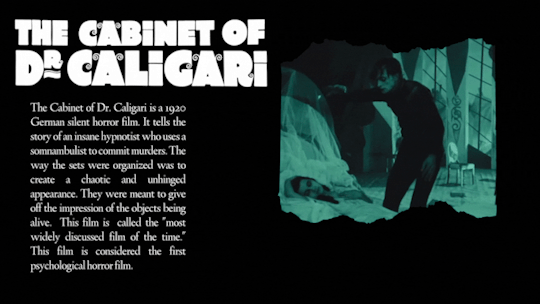

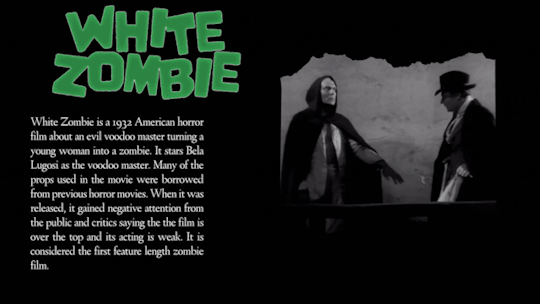
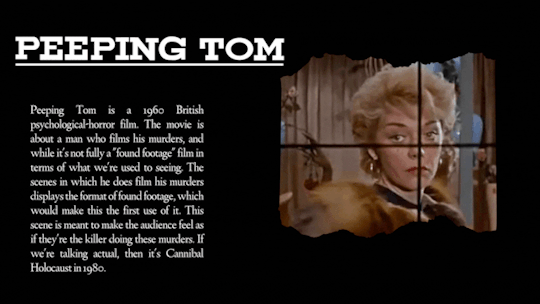



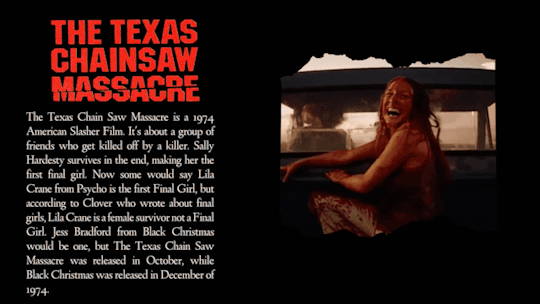
horror + the firsts
#some might you can probably make a case for but i did a lot of research so here it is#horror#horror movies#the house of the devil#frankenstein#the cabinet of dr. caligari#thirteen women#white zombie#peeping tom#dr. jekyll and mr. hyde#jaws#nosferatu#the texas chain saw massacre#*#movies#filmedit#moviesedit#myedit
876 notes
·
View notes
Video
youtube
The Renegades – Thirteen Women
2 notes
·
View notes
Text

Ricardo Cortez and Louis Natheaux in Thirteen Women (1932)
0 notes
Text
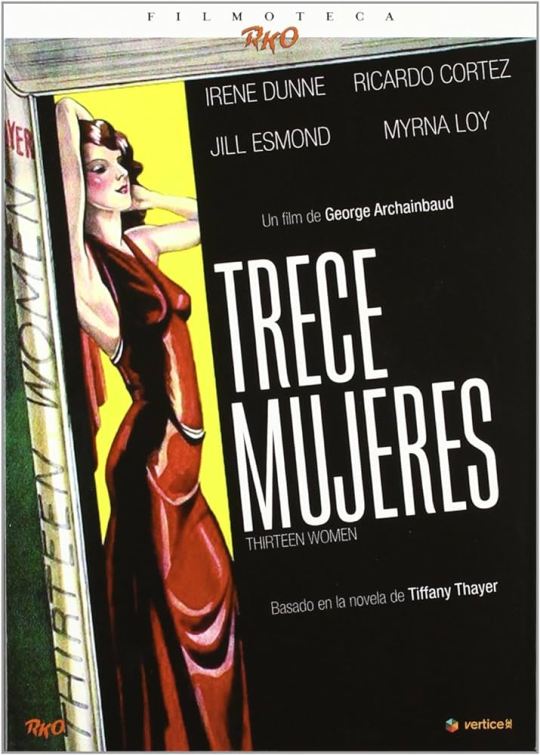
Thirteen Women (1932)
dir. George Archainbaud
0 notes
Text
'Thirteen Women' – Irene Dunne vs. Myrna Loy on Criterion Channel
Thirteen Women (1932) is a “Ten Little Indians”-style thriller set in a circle of sorority sisters whose planned reunion is marred with premonitions of death, murder, and suicide sent by a swami (C. Henry Gordon) whose astrological readings are all the rage in their society.
Irene Dunne is Laura Stanhope, the good girl center of the sorority society, and Myrna Loy is Ursula Georgi, the exotic…

View On WordPress
#1932#C. Henry Gordon#Criterion Channel#David O. Selznick#DVD#Florence Eldridge#George Archainbaud#Irene Dunne#Jill Esmond#Kay Johnson#Mary Duncan#Myrna Loy#Ricardo Cortez#Thirteen Women#Tiffany Thayer#VOD
1 note
·
View note
Text

I can be much more entertaining!
yes ma'am.
#obey me#obey me thirteen#obey me thirteen fanart#thirteen obey me#obey me shall we date thirteen#thirteenxmc#obey me! shall we date?#obm#obey me fanart#obm!swd#my art#obey me shall we date#obey me reaper#obey me happy devil day#obey me HDD#obey me nightbringer#i lvoe women
614 notes
·
View notes
